Who Walks Down the Groom’s Mom? Understanding Wedding Procession Etiquette
In the mosaic of a wedding ceremony, each participant has a role that weaves together tradition with a touch of personal flair. When it comes to the groom’s mother, there’s a special moment reserved for her entrance that symbolizes her role in the groom’s life. Traditionally, she is escorted down the aisle, highlighting her importance on this significant day. Yet, who should have the honor of accompanying her can vary based on a range of factors from family dynamics to cultural influences.
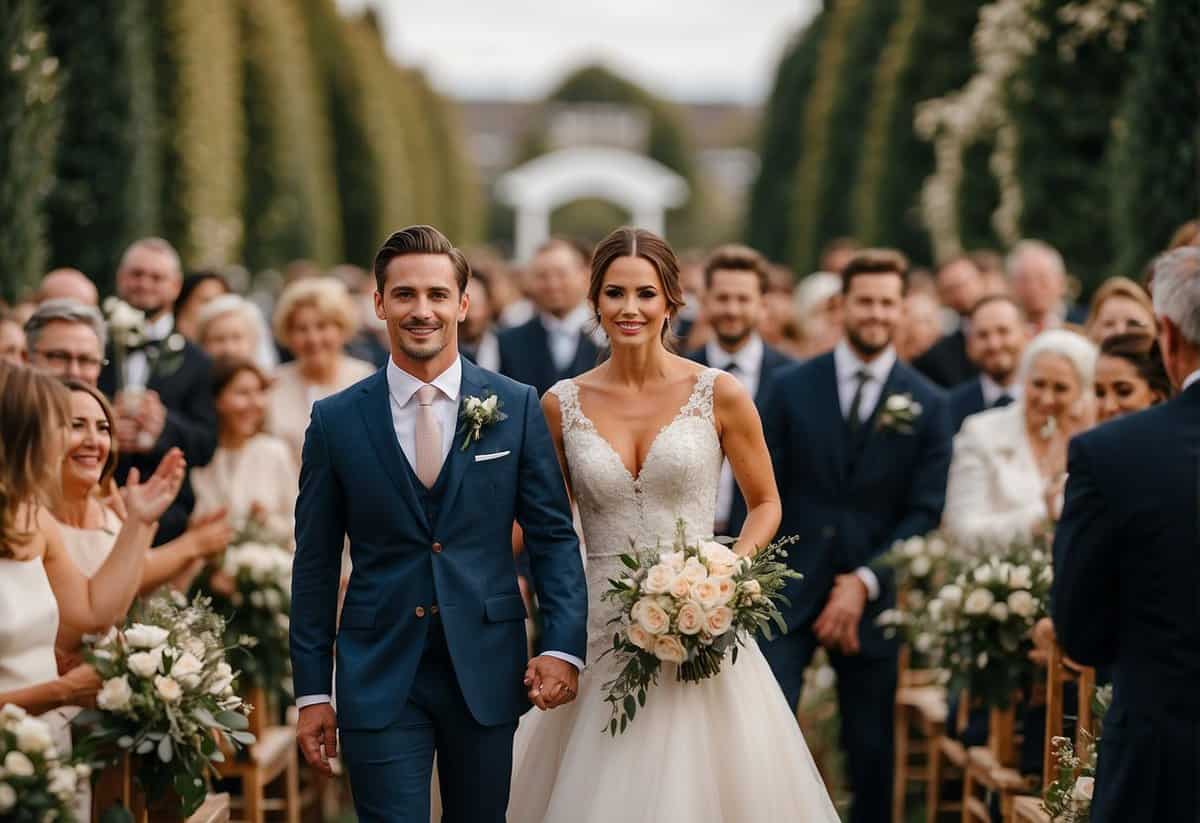
Just as weddings have evolved, so have the customs surrounding who walks with the groom’s mom. Changing family structures, cultural norms, and personal preferences all play a part in shaping this decision. While tradition may suggest specific figures for this honor, ultimately, it’s a choice that reflects the unique relationships and values of those involved. This moment in the procession stands as a personal signature within the ceremony, and deciding who will escort the groom’s mother down the aisle often turns into a beautiful expression of family bonds.
Key Takeaways
- The groom’s mom plays a significant role in the wedding ceremony.
- Traditions influence but do not dictate who escorts her down the aisle.
- Personal preferences and family dynamics uniquely shape the escort choice.
Walking Down the Aisle Basics
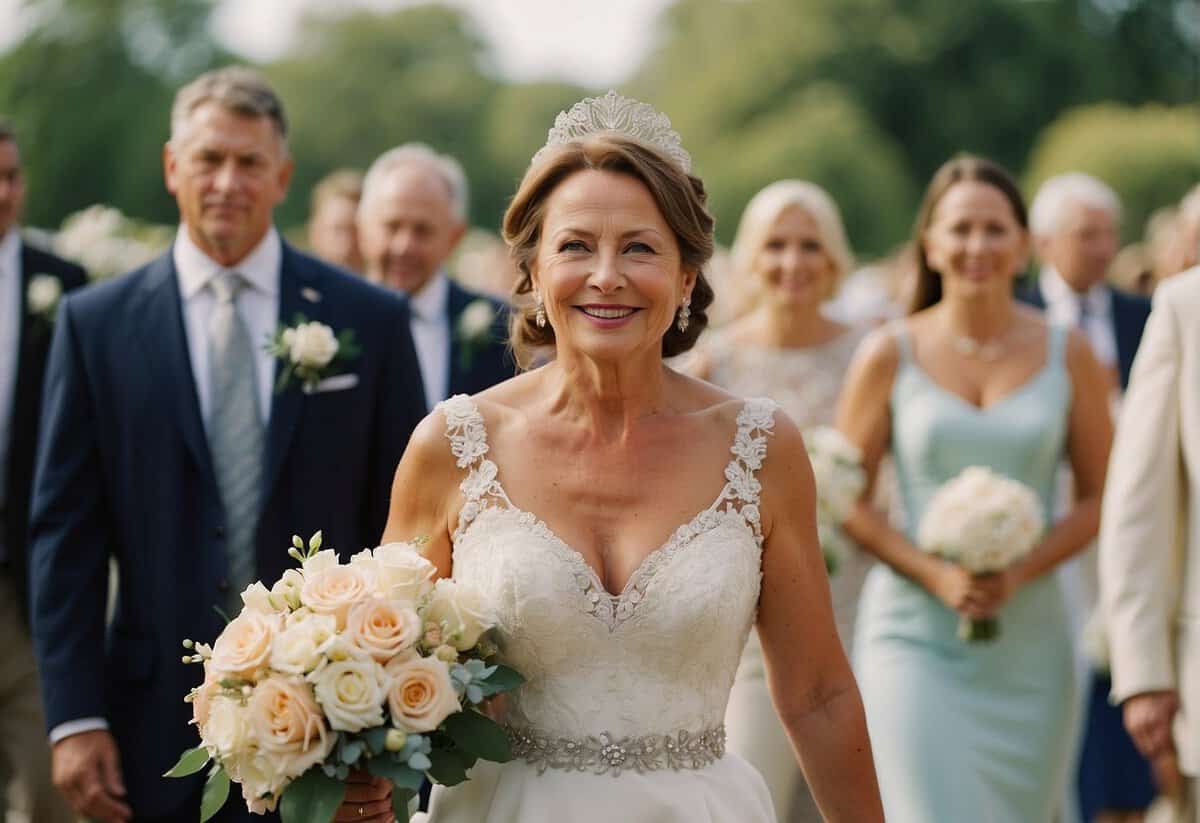
When planning your wedding processional, consider the honored role of the groom’s mom and how tradition versus modern approaches can shape her entrance.
The Role of the Groom’s Mother
Traditionally, the mother of the groom plays a significant role during the wedding processional. As the groom’s mother, you’re not just a guest; you’re a key figure with a specific place in the order of events. The prelude to the ceremony often sees you being seated shortly before the bridal party makes their entrance, symbolizing your status and the support you’ve given your son throughout his life.
In many Christian ceremonies, it is common for the groom’s mother to be escorted down the aisle after the grandparents and before the bridesmaids. For more details on this tradition, you may visit Brides.com.
Traditional vs. Modern Approaches
Traditional weddings often adhere to a strict processional order, which can vary between cultures and religions but usually follows a set pattern that many recognize. This can include the mother of the groom being escorted by a family member or an usher to her seat.
Modern weddings, however, offer a more flexible approach to processionals, accommodating different family dynamics and personal preferences. You might walk down the aisle solo, accompany your son (the groom) partway, or even stand with him at the altar from the outset of the ceremony. It’s not unusual for modern weddings to alter or rearrange the processional order to better align with their values and relationships. Websites such as The Knot provide insights into both traditional and contemporary processional orders.
It’s important to communicate with your son and his partner to understand their vision for the wedding and agree on how you’ll participate. By doing so, you’ll ensure that the wedding processional reflects the unique bond you share with your son and respects both traditions and contemporary practices.
Ceremonial Roles and Responsibilities
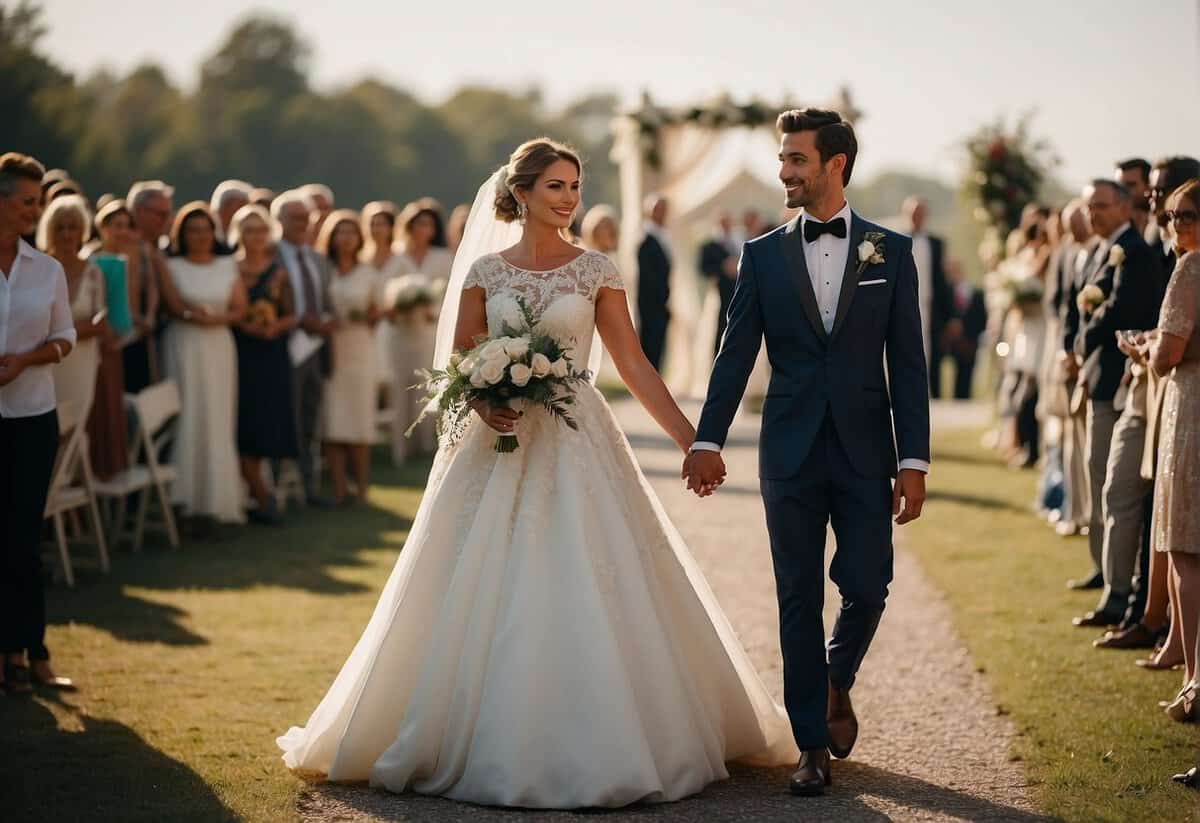
In a wedding, the order of the processional and the selection of the right escort for the mother of the groom are important ceremonial components. They honor both family traditions and the special guests.
Processional Order Explained
The processional is the structured sequence of entry into the wedding ceremony. As part of the wedding party, the mother of the bride typically enters the ceremony first and is seated on the left side, setting the stage for the rest of the processional. Following her may be the groomsmen and bridesmaids, often entering as pairs. The father of the bride usually walks the bride down the aisle, symbolizing the giving away of the bride.
Next in the order are the flower girl and the ring bearer, who add a touch of innocence and charm to the procession. Following them, the maid of honor makes her entrance, directly before the bride. She is closely followed by the best man, who may also be in charge of holding the rings.
In some wedding traditions, the father and mother of the groom walk down the aisle together. In other traditions, especially Jewish ceremonies, the groom’s parents accompany him in the processional. The wedding planner is often behind the scenes, ensuring that everyone knows their cues and timing.
Assigning the Right Escort
Choosing who will walk with the mother of the groom down the aisle can be a thoughtful decision. If tradition guides you, the mother could walk alone or be escorted by a family member such as a son or brother. In some instances, she may be accompanied by the groom’s father or, if applicable, a stepfather.
But tradition isn’t the only guiding force—you should consider what feels right for your family and the dynamics involved. It’s important to communicate clearly to avoid confusion and ensure everyone feels comfortable with their assigned role.
Cultural and Religious Considerations
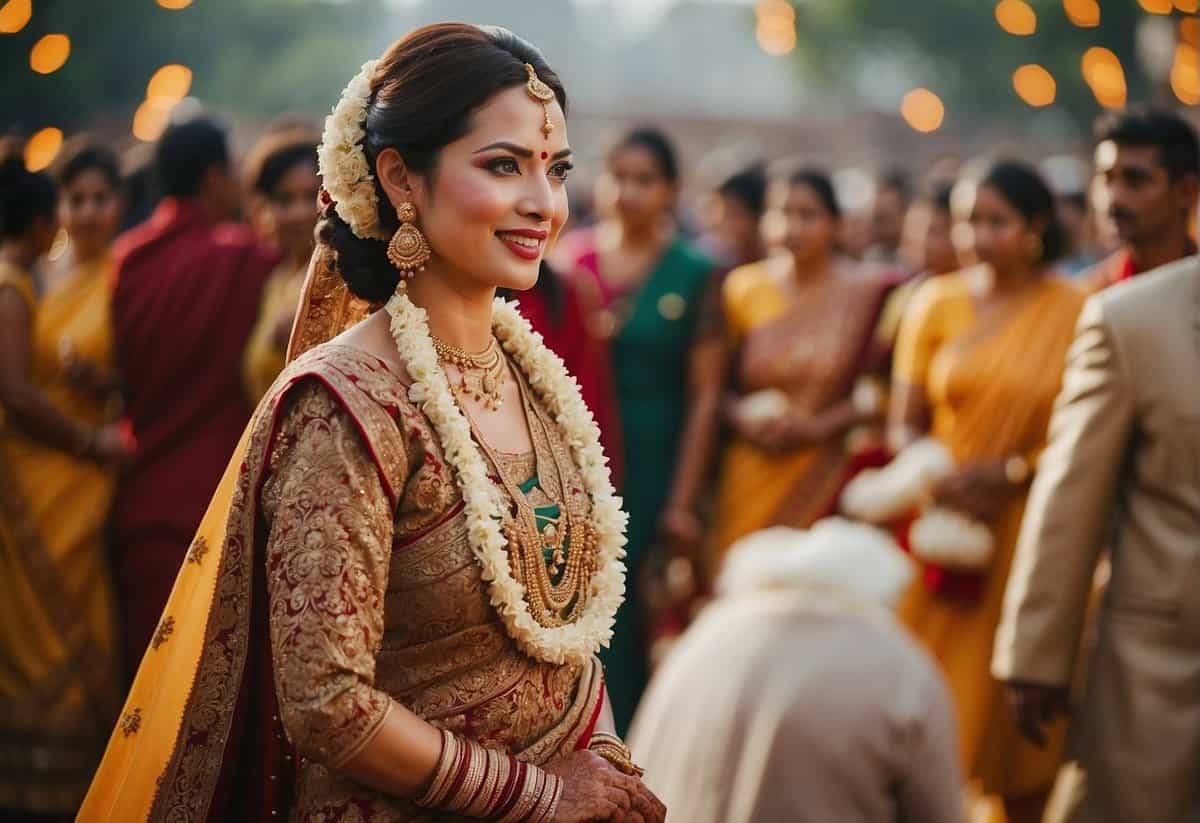
In a wedding, the position and role of the groom’s mother can vary significantly across different cultures and religions. By understanding these different traditions, you can better appreciate the diversity of wedding ceremonies around the world.
Christian Wedding Traditions
In a Christian wedding ceremony, the groom’s mother is often one of the first to walk down the aisle. This act symbolizes the family’s blessings on the union. For more details on the order, you may refer to Your Complete Guide to All Orders.
Jewish Wedding Customs
During a Jewish wedding, tradition typically has the groom’s parents walking him down the aisle to the chuppah, a canopy which represents the home the couple will build together. Both the mother and father of the groom accompany him, a gesture that emphasizes family unity. Learn more from this source on Who Walks the Groom Down the Aisle.
Hindu Wedding Processionals
In a Hindu wedding, the groom’s mother generally does not walk him down the aisle. Instead, the groom makes his way to the mandap, a sacred wedding canopy, often in a procession called the Baraat where he is the center of attention, symbolizing his journey from bachelorhood to marital life.
Nondenominational and Secular Walks
For nondenominational or non-religious weddings, there’s significantly more flexibility in determining who walks whom down the aisle. The groom’s mother may escort the groom, or she may be part of the processional in a different capacity, indicative of the couple’s personal relationship and preferences in their nondenominational wedding.
Personalizing the Experience

When planning your wedding, personalizing how the groom’s mother makes her entrance can encapsulate your family’s values and create a heartfelt vignette that resonates with all your guests.
Incorporating Family and Values
Family comes first in many wedding traditions, and your ceremony offers the perfect canvas to honor the groom’s parents. You might choose to have the father of the groom escort his wife, celebrating their unified support for you. Alternatively, involving a close family member who shares a special bond with the groom’s mother could speak volumes about the connection within your family. This guide serves not just as a pathway to her seat, but as a symbol of appreciation and gratitude for the love and guidance she has provided.
Creating a Moving and Memorable Moment
A touching moment within the ceremony is when the groom’s mother walks down the aisle. To create this memorable scene, consider incorporating a rehearsal to ensure the procession reflects the emotion and connection you want to convey. Whether she is accompanied by the bride’s mother as a sign of unity or walks alone to highlight her role, the goal is to elicit feelings of love and support. This gesture signifies not only respect for the groom’s mother but also underscores the importance of both families coming together.
Frequently Asked Questions
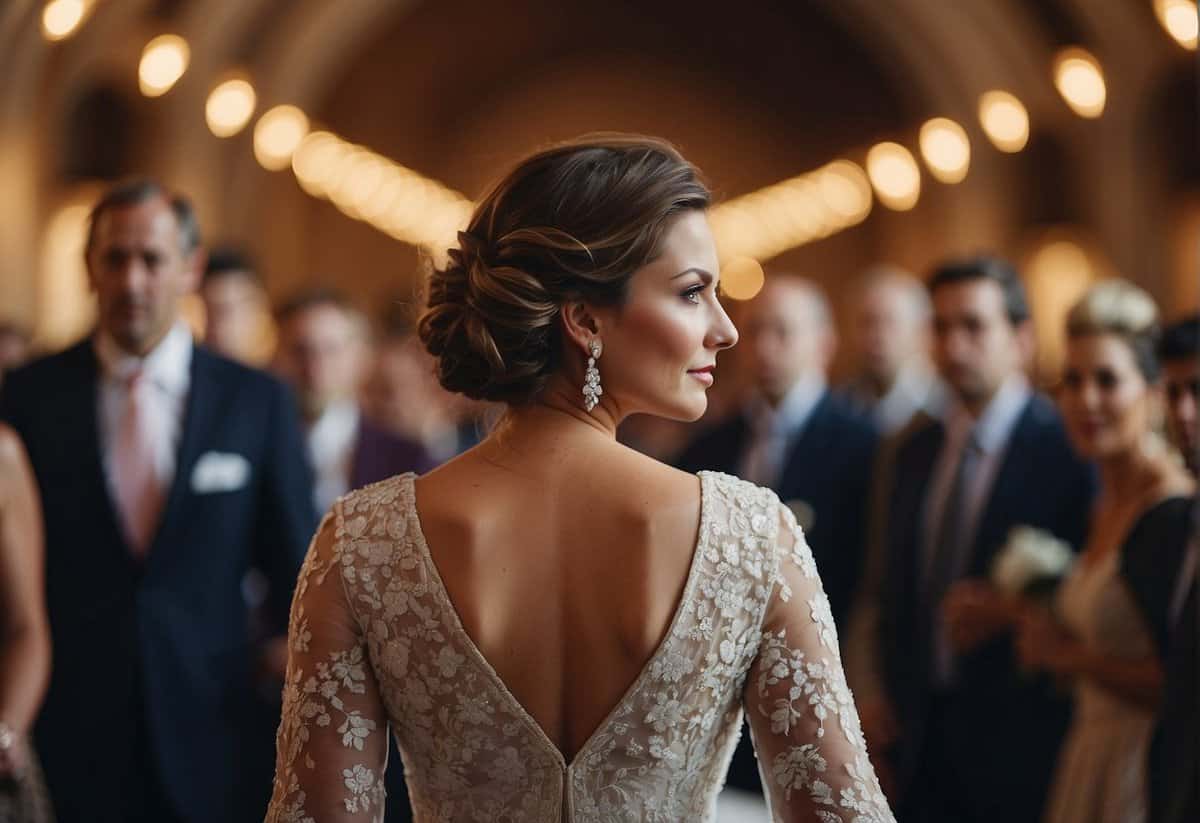
In the heartfelt moments of a wedding procession, the role of the groom’s mother is a cherished tradition with specific customary practices. Here’s what you need to know about her involvement.
What is the traditional role for the groom’s mother during the wedding processional?
The groom’s mother typically has an important role in the wedding processional, often being one of the first to walk down the aisle, symbolizing the joining of both families.
Can the groom accompany his mother down the aisle?
Yes, it is not uncommon for the groom to accompany his mother down the aisle, although she may also be escorted by a close family member, an usher, or choose to walk alone.
What are some popular song choices when the groom walks his mother down the aisle?
Selections for the groom walking his mother down the aisle could range from classic instrumental pieces to more contemporary songs that reflect their relationship and the tone of the ceremony.
Who is responsible for seating the groom’s mother at the ceremony?
Typically, an usher is tasked with seating the groom’s mother at the ceremony, but the groom or another significant family member can also fulfill this role.
How does the wedding procession typically order family members?
The wedding procession often follows a traditional order: grandparents first, then the groom’s mother, followed by the bride’s mother, indicating their respective family’s involvement in the nuptial proceedings.
During wedding preparations, who does the groom’s mother usually get ready with?
The groom’s mother usually prepares with the groom’s family or separately, often having her makeup and hair done professionally to ensure she looks her best for the celebration.
